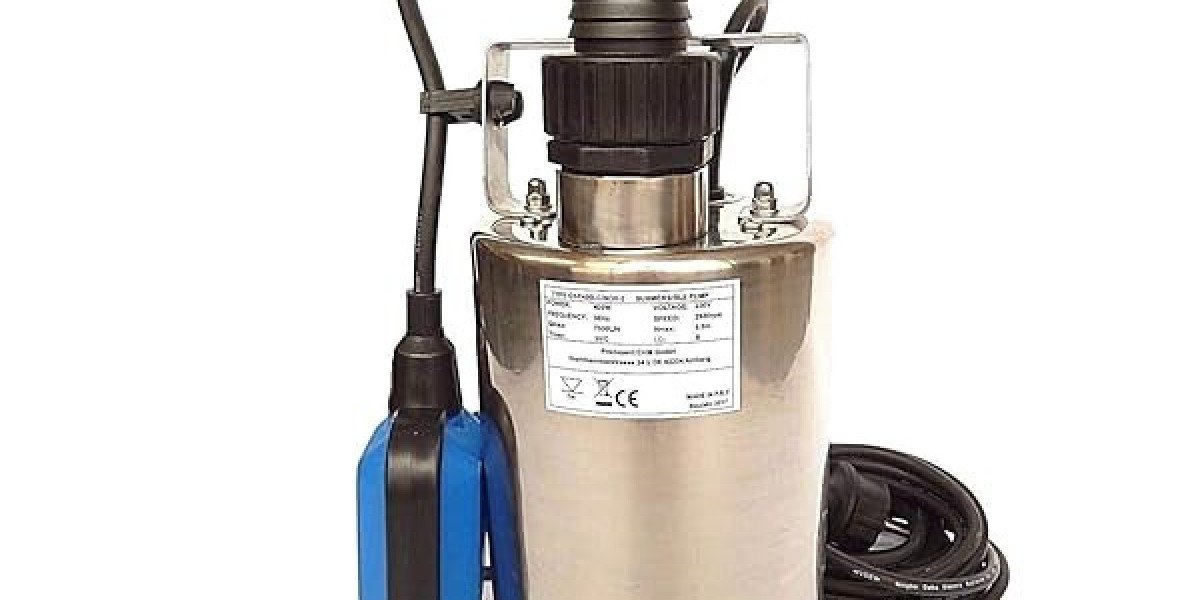Water management is crucial in various industries, from agriculture to residential applications. One technology that's making waves in this field is the submersible pump. This powerful and efficient tool is changing the way we move water, offering numerous benefits that are hard to ignore. In this blog post, we'll explore the world of submersible pumps, their applications, and why they might be the perfect solution for your water management needs.
Understanding Submersible Pumps
What Are Submersible Pumps?
Submersible pumps are specialized devices designed to operate underwater. Unlike traditional pumps, which are situated above the water surface and use suction to draw water up, submersible pumps are placed directly in the water source. This unique positioning allows them to push water to the surface rather than pulling it, resulting in greater efficiency and reliability.
How Do Submersible Pumps Work?
The mechanics of a submersible pump involve a hermetically sealed motor close-coupled to the pump body. This design prevents water from entering the motor, thus ensuring safe and efficient operation underwater. When activated, the motor drives an impeller that forces water through the pump and up to the surface. The pump's submersion reduces cavitation, a problem often encountered by traditional pumps due to the formation of vapor bubbles.
Types of Submersible Pumps
There are several types of submersible pumps, each suited for different applications:
- Sump Pumps: Primarily used in basements to remove accumulated water.
- Sewage Pumps: Designed to handle waste and sewage materials.
- Well Pumps: Used to extract water from underground wells.
- Utility Pumps: Versatile pumps used for various residential and commercial purposes.
Understanding these types helps you choose the right pump for your specific needs.
Benefits of Using Submersible Pumps
Efficiency and Performance
Submersible pumps are known for their high efficiency. Because they push water rather than pull it, they consume less energy compared to traditional pumps. This efficiency translates to lower operational costs and reduced energy consumption.
Noise Reduction
Operating underwater, submersible pumps are significantly quieter than surface pumps. This feature makes them ideal for residential areas where noise pollution could be a concern.
Durability and Longevity
Constructed with robust materials that withstand harsh underwater conditions, submersible pumps are built to last. Their sealed design prevents damage from water ingress, ensuring long-term reliability and minimal maintenance.
Applications of Submersible Pumps
Agricultural Use
In agriculture, submersible pump play a vital role in irrigation. They efficiently deliver water to fields, ensuring crops receive the necessary hydration. This application not only boosts crop yield but also promotes sustainable water use.
Residential Use
Homeowners use submersible pumps for various purposes, including draining flooded basements, maintaining ponds, and ensuring a consistent water supply from wells. Their quiet operation and efficiency make them a popular choice for residential water management.
Industrial Use
Industries rely on submersible pumps to handle large volumes of water in processes such as mining, oil drilling, and wastewater treatment. Their ability to operate in challenging conditions makes them indispensable in industrial settings.
Choosing the Right Submersible Pump
Assess Your Needs
Before selecting a submersible pump, it's crucial to assess your specific requirements. Consider factors such as water source depth, required flow rate, and the type of water (clean, dirty, or sewage) you'll be handling.
Check the Specifications
Reviewing the pump's specifications, such as power rating, head (maximum height the pump can lift water), and flow rate, ensures you choose a model that meets your needs. Consult with experts or refer to manufacturer guidelines for accurate information.
Consider the Material
Submersible pumps come in various materials, including stainless steel, cast iron, and thermoplastic. Your choice should depend on the water type and environmental conditions. For example, stainless steel pumps are ideal for corrosive environments.
Installation and Maintenance Tips
Proper Installation
Correct installation is vital for the optimal performance of your submersible pump. Ensure the pump is fully submerged, use appropriate electrical connections, and follow manufacturer guidelines for installation depth and positioning.
Regular Maintenance
While submersible pumps are low-maintenance, periodic checks are essential to ensure longevity. Inspect the pump for debris, check electrical connections, and monitor performance. Regular maintenance helps identify potential issues before they become major problems.
Troubleshooting Common Issues
Even the best submersible pumps can encounter issues. Common problems include reduced flow rate, strange noises, and motor failure. Troubleshooting guides and professional assistance can help resolve these issues promptly, ensuring your pump remains in top condition.
Innovations in Submersible Pump Technology
Smart Pumps
The advent of smart technology has reached the realm of submersible pumps. Smart pumps come with sensors and connectivity features that allow remote monitoring and control via smartphones or computers. These innovations enhance operational efficiency and provide real-time data on pump performance.
Energy-Efficient Models
Manufacturers are continually developing more energy-efficient submersible pumps. These models are designed to reduce energy consumption further while maintaining high performance. Investing in energy-efficient pumps can lead to significant cost savings over time.
Advanced Materials
New materials are being used to construct submersible pumps, enhancing their durability and resistance to harsh environments. Innovations in materials science are leading to pumps that can withstand extreme conditions, extending their lifespan and reliability.
Environmental Impact of Submersible Pumps
Sustainable Water Management
Submersible pumps contribute to sustainable water management by optimizing water usage and reducing waste. Their efficiency and reliability make them a key component in conservation efforts, particularly in agriculture and industrial applications.
Reducing Energy Consumption
Energy-efficient submersible pumps help reduce overall energy consumption, contributing to lower carbon footprints. By choosing models with higher efficiency ratings, users can support environmental sustainability while benefiting from cost savings.
Supporting Clean Water Initiatives
In regions where access to clean water is limited, submersible pumps play a crucial role in providing safe drinking water. Their ability to access deep water sources ensures communities have a reliable supply of clean water, supporting public health and wellbeing.
Cost Considerations
Initial Investment
The upfront cost of submersible pumps can vary widely based on type, specifications, and brand. While some models may seem expensive, it's important to consider the long-term benefits and cost savings they offer.
Operating Costs
Operating costs include energy consumption, maintenance, and potential repairs. Energy-efficient models typically have lower operating costs, making them a wise investment over time. Regular maintenance can also help minimize unexpected expenses.
Long-Term Savings
Investing in a high-quality submersible pump can lead to significant long-term savings. Their durability, efficiency, and low maintenance requirements mean fewer replacements and repairs, ensuring you get the most out of your investment.
Real-World Examples and Case Studies
Agricultural Success Story
In a rural farming community, the introduction of submersible pumps transformed irrigation practices. Farmers experienced increased crop yields and reduced water waste, leading to higher profits and more sustainable farming.
Residential Satisfaction
A homeowner facing frequent basement flooding installed a submersible sump pump. The pump effectively managed water levels, preventing damage and providing peace of mind. The homeowner noted significant savings on repair costs and increased property value.
Industrial Efficiency
A mining operation struggled with water management in its extraction processes. By implementing submersible pumps, the company improved water handling efficiency, reduced downtime, and enhanced overall productivity, resulting in substantial financial gains.
Future Trends in Submersible Pump Technology
Integration with IoT
The Internet of Things (IoT) is set to revolutionize submersible pump technology. Future models will feature advanced connectivity, allowing for seamless integration with other smart devices and systems. This integration will enable predictive maintenance, real-time performance monitoring, and automated adjustments, enhancing overall efficiency.
Enhanced Energy Solutions
With the growing emphasis on renewable energy, submersible pumps powered by solar and wind energy are expected to become more prevalent. These solutions will not only reduce operating costs but also contribute to environmental sustainability.
Customization and Personalization
Manufacturers are exploring ways to offer more customizable and personalized submersible pump solutions. This trend will allow users to tailor pumps to their specific needs, ensuring optimal performance and efficiency for various applications.
Conclusion
Submersible pumps are transforming water management across various sectors. Their efficiency, durability, and versatility make them an ideal solution for residential, agricultural, and industrial applications. By understanding the benefits, applications, and considerations of submersible pumps, you can make informed decisions to enhance your water management practices.



